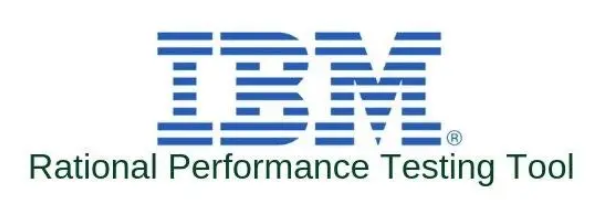Introduction
Performance software testing is one of the crucial parts of ensuring the software or application has no issues under normal or heavy workloads. To carry out this process, developers or testers must use performance testing tools. They help them generate a testing scenario and automate the testing process.
Performance testing tools can also be used to assess the security of a system under high load conditions, helping to identify potential vulnerabilities and ensuring that the system is capable of withstanding attacks.
In today’s article, we select the 10 best performance testing tools and give you information about the features and capabilities of each tool.
Table of Contents
Test Your Software with These Top 10 High-Performing Testing Tools
1. WebLOAD

RadView Software has developed WebLOAD, which is a powerful tool that is particularly useful for enterprise-scale applications or products. With its ability to perform real-life environment testing, users can be confident in the performance of their systems. On WebLOAD, testers can conduct various types of performance testing such as load, stress, and endurance.
Features:
- Stimulating massive traffic for testing to identify bottlenecks.
- Providing detailed reports and analytic dashboards for root cause analytics.
- Supporting hundreds of technologies stack.
- Integrating with APM Tools and open-source software (Selenium and Jenkins).
- Including native Javascript scripting and record capabilities.
- Generating load testing on on-premise or your preferred cloud service provider (AWS, Azure, etc.).
- Supporting several protocols like HTTP, HTTPS, SOAP, and REST.
2. LoadRunner

Load Runner is a product from Micro Focus, which serves to simplify the testing process of performance and load testing. Testers can detect unusual system behavior or performance issues via LoadRunner. It is considered one of the most popular performance testing tools.
Features:
- Handling thousands of concurrent virtual users for heavy load testing.
- Supporting a variety of protocols such as RIA, Web 2.0, Mobile, SAP, Oracle, Window Socket, Citrix, RTE, MS SQL Server, and Mail.
- Supporting almost all the latest cutting-edge technologies stack and applications.
- Having Autocorrelation Engine, which quickly spots the performance issue.
- Creating flexible and scalable test scenarios with minimal hardware.
3. Apache JMeter

The founders originally created this open-source tool for testing web applications. Like any testing tool, Apache JMeter serves the purpose of testing system behavior and identifying performance problems.
Features:
- Developing an application that is completely pure Java.
- Supporting a wide range of protocols like SOAP, REST, Web 2.0, LDAP, TCP, etc.
- Generating heavy load (concurrent users or transactions) on web applications for real-world test scenarios.
- Allowing developers to write custom code on the application to carry out the challenging test.
- Featuring distributed testing function, which means multiple devices can simultaneously make heavy loads.
- Providing graphical and dynamic reports which are helpful for the tester to analyze.
4. NeoLoad

The creators made NeoLoad for testing both web and mobile applications. The tool allows testers to stimulate user activities to test the system’s performance under a high volume of usage. In addition, this is one of the performance testing tools that provide a good platform for Agile and DevOps teams as it integrates with the CI/CD pipeline.
Features:
- Integrating with DevOps tools such as Jenkins, Git, and Locker for testing automation.
- Offering a range of APIs and plugins for the tool’s functionality extension.
- Using GUI, which allows users to conduct tests without coding.
- Providing real-time test results with a dynamic dashboard.
- Integrating with container orchestrators like Kubernetes, OpenShift, AKS, EKS, and GKE to automatically provision load testing infrastructure on demand without requiring manual scripts or resource connections.
5. StressStimulus

StressStimulus, designed by Microsoft Dynamic, is considered one of the top performance testing tools available in the market for web, mobile, and Enterprise applications. By archiving and duplicating app scenarios to emulate usage patterns on system infrastructure, the tool is able to accurately pinpoint performance bottlenecks. Additionally, under heavy traffic loads, it can isolate page speed issues, ensuring that all aspects of the system are thoroughly tested.
Features:
- Using end-to-end Test Wizard which provides a friendly UI for users and saves time for the learning phase of beginners.
- Reflecting the script attributes and the configuration of the UI setting with StressStimulus XML scripting
- Supporting protocols and technologies such as HTTP, HTTPS, AJAX, SOAP, WCF, binary WCF, and XML over HTTP.
- Allowing users to export scripts from test scenarios record to Virtual Studio so that users can continue testing in the same environment.
6. LoadUI Pro

LoadUI Pro is a commercial load-testing tool developed by Smartbear software. Users can perform load tests on web services, RESTful APIs, or network-based applications (Databases, Microservices).
Features:
- Creating quick test scenarios to test the speed and scalability of APIs
- Supporting most operating systems, including Windows, Linux, and Mac OS.
- Conducting comprehensive APIs testing before deployment to give deep insights into real-time APIs
- Allowing users to execute several tests simultaneously
- Generating instant analysis and reporting without pausing the current testing
7. SmartMeter.io

As a commercial tool developed by TNG Technology Consulting GmbH, SmartMeter.io offers enterprise-level features for load and performance testing. Additionally, the tool is built on top of the Apache JMeter framework, which it enhances with additional features and capabilities.
Features:
- Equipping Recorder features to help users create testing scenarios without scripts. A Proxy or browser plugin is not required.
- Supporting these protocols: HTTP, JDBC, JMS, TCP, and HTTPS
- Generating detailed reports, including evaluated acceptance criteria and comparison tool
- Supporting distributed testing and continuous integration
8. Rational Performance Tester

IBM develops Rational Performance Tester (RPT) to help software testers test the performance and scalability of web and server applications. The tool is easy to use and allows users to execute tests quickly.
Features:
- Supporting many protocols, including HTTP, SAP, Siebel, SIP, TCP Socket, and Citrix
- Working as a powerful analysis tool because it pinpoints the root cause of bottleneck issues
- Modeling efficiently and emulating various users while minimizing data usage
- Featuring advanced test scenarios and functions to insert custom Java code
9. Gatling

Gatling is an open-source performance testing solution based on Scala, Akka, and Netty. The tool allows users to simulate thousands of users visiting a website or web application and measure the performance under a heavy load.
Features:
- Providing a high-level Domain Specific Language (DSL) for writing performance Load-Test-As-Code.
- Integrating with your CI/CD pipeline to serve the DevOps approach.
- Featuring advanced metrics to analyze your tests: run comparisons, TCP connection metrics, DNS resolutions, and generators’ monitoring.
10. Silk Performer

Silk Performer is a load and stress testing tool for enterprise-scale applications. You can create thousands or millions of virtual users to test the application’s performance.
Features:
- Allowing testers to carry out tests without managing complicated infrastructure with CloudBrust
- Supporting a wide range of application protocols and technologies such as HTTP, TCP/IP, LDAP, SOAP, .NET, etc.
- Having 50 global locations where you can choose to perform tests.
Comparison Table: Overview and Features of Ten Performance Testing Tools
Testers often pick the most suitable one depending on the project requirement, technologies stack, and budget. To help you distinguish and make the right decision, we make a comparison table with a general overview and features of these performance testing tools.
| Tool Name | License Model | Protocol Support | Scripting Language | Test Result Analysis | Integration with Other Tools | Supported Operating Systems |
| WebLOAD | Commercial | HTTP/HTTPS, WebSocket, SAP, Oracle Forms | JavaScript, Java | Advanced Analytics, Dashboard, Reporting | Jenkins, CI/CD, Selenium, ALM | Windows, Linux, Mac OS |
| LoadRunner | Commercial | HTTP/HTTPS, FTP, SMTP, DNS, LDAP, Citrix, SAP | C, Java, VBScript | Built-in Analysis, Dashboard, and Reporting | CI/CD, ALM, Git, Jenkins | Windows |
| JMeter | Open-Source | HTTP/HTTPS, FTP, JDBC, SOAP, LDAP, TCP, JMS | Java, Groovy | Built-in Analysis, Dashboard, and Reporting | Maven, Jenkins, CI/CD, ALM | Windows, Linux, Mac OS |
| NeoLoad | Commercial | HTTP/HTTPS, WebSocket, SAP, Oracle Forms, Citrix | JavaScript | Advanced Analytics, Dashboard, and Reporting | Jenkins, CI/CD, Selenium, ALM | Windows, Linux, Mac OS |
| StresStimulus | Commercial | HTTP/HTTPS, WebSocket, WebSockets, HTTP/2 | C#, VB.NET | Advanced Analytics, Dashboard, and Reporting | Visual Studio, Jenkins, CI/CD | Windows |
| LoadUI Pro | Open-Source | REST, SOAP, HTTP, JMS, RabbitMQ, TCP, UDP | Groovy, JavaScript | Advanced Analytics, Dashboard, and Reporting | Jenkins, ALM, Git, CI/CD | Windows, Linux, Mac OS |
| SmartMeter.io | Commercial | HTTP/HTTPS, WebSocket, JMS, RabbitMQ, AMQP, CoAP, MQTT | Java, Groovy | Advanced Analytics, Dashboard, and Reporting | Jenkins, CI/CD, Selenium, Git | Windows, Linux, Mac OS |
| Rational Performance Tester | Commercial | HTTP/HTTPS, SMTP, FTP, TCP, Citrix, SAP | Java | Built-in Analysis, Dashboard, and Reporting | CI/CD, ALM, Jenkins | Windows |
| Gatling | Open-Source | HTTP/HTTPS, WebSocket, JMS, JDBC, MQTT | Scala, Java | Advanced Analytics, Dashboard, and Reporting | Jenkins, CI/CD, Maven, ALM | Windows, Linux, Mac OS |
| Silk Performer | Commercial | HTTP/HTTPS, SOAP, SMTP, POP3, IMAP, DNS, Citrix | C, Java, VBScript | Built-in Analysis, Dashboard, and Reporting | CI/CD, ALM, Jenkins | Windows |
Conclusion
Using performance testing tools is a must to carry out the testing process smoothly. There are many different tools available in the market. As a software tester, you should learn and practice as many tools as possible.
If you’re looking to learn more about performance testing tools and techniques, be sure to check out CyStack’s complete guide to performance testing! We hope our insights will help you explore the world of performance testing and discover the best tools and practices for your testing needs.
 7 minutes read
7 minutes read
